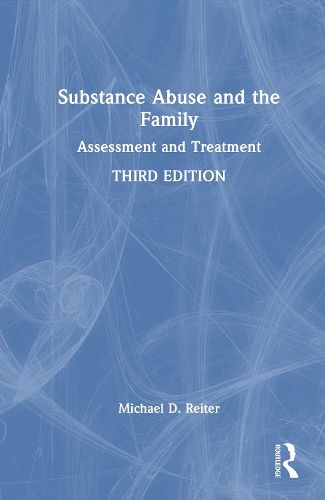Readings Newsletter
Become a Readings Member to make your shopping experience even easier.
Sign in or sign up for free!
You’re not far away from qualifying for FREE standard shipping within Australia
You’ve qualified for FREE standard shipping within Australia
The cart is loading…






This fully updated third edition of Substance Abuse and the Family demonstrates what it means to view addiction through a systems lens by considering biology and genetics, family relationships, and larger systems.
Michael D. Reiter illustrates how to examine a person's predilection to become addicted, their social environment around substance use, the functionality of their family, and various treatment options. Chapters are organized around two sections: Assessment and Treatment. The first section pays attention to how the family system organizes around substance use and abuse. Here family roles, culture, and other issues such as family violence and resilience are covered. Two chapters are also included on the neuroscience and genetics of addiction. There are also chapters on roles of family members in addicted families, using genograms, and working in a culturally-sensitive way, with culture-specific consideration paid to Black, Hispanic and Latin American, Asian American, and Indigenous families. A separate chapter examines issues faced by both youth and adult children of alcoholics. The second half of the book explores what a systems orientation means in practice and goes over self-help groups for individuals and families. An overview of the major family therapy theories is included, which examines intergenerational, experiential, communication approaches, strategic, systemic, and post-modern models. New to this edition is a chapter on trauma and stigma and its relationship to addictions and substance use and abuse. Each chapter has been updated with cutting-edge research, additional figures to enhance concepts, as well a case application to demonstrate and apply each chapter's ideas.
Intended for undergraduate and graduate students, as well as beginning practitioners, this text provides one of the most in-depth examinations on the topic available.
$9.00 standard shipping within Australia
FREE standard shipping within Australia for orders over $100.00
Express & International shipping calculated at checkout
This fully updated third edition of Substance Abuse and the Family demonstrates what it means to view addiction through a systems lens by considering biology and genetics, family relationships, and larger systems.
Michael D. Reiter illustrates how to examine a person's predilection to become addicted, their social environment around substance use, the functionality of their family, and various treatment options. Chapters are organized around two sections: Assessment and Treatment. The first section pays attention to how the family system organizes around substance use and abuse. Here family roles, culture, and other issues such as family violence and resilience are covered. Two chapters are also included on the neuroscience and genetics of addiction. There are also chapters on roles of family members in addicted families, using genograms, and working in a culturally-sensitive way, with culture-specific consideration paid to Black, Hispanic and Latin American, Asian American, and Indigenous families. A separate chapter examines issues faced by both youth and adult children of alcoholics. The second half of the book explores what a systems orientation means in practice and goes over self-help groups for individuals and families. An overview of the major family therapy theories is included, which examines intergenerational, experiential, communication approaches, strategic, systemic, and post-modern models. New to this edition is a chapter on trauma and stigma and its relationship to addictions and substance use and abuse. Each chapter has been updated with cutting-edge research, additional figures to enhance concepts, as well a case application to demonstrate and apply each chapter's ideas.
Intended for undergraduate and graduate students, as well as beginning practitioners, this text provides one of the most in-depth examinations on the topic available.